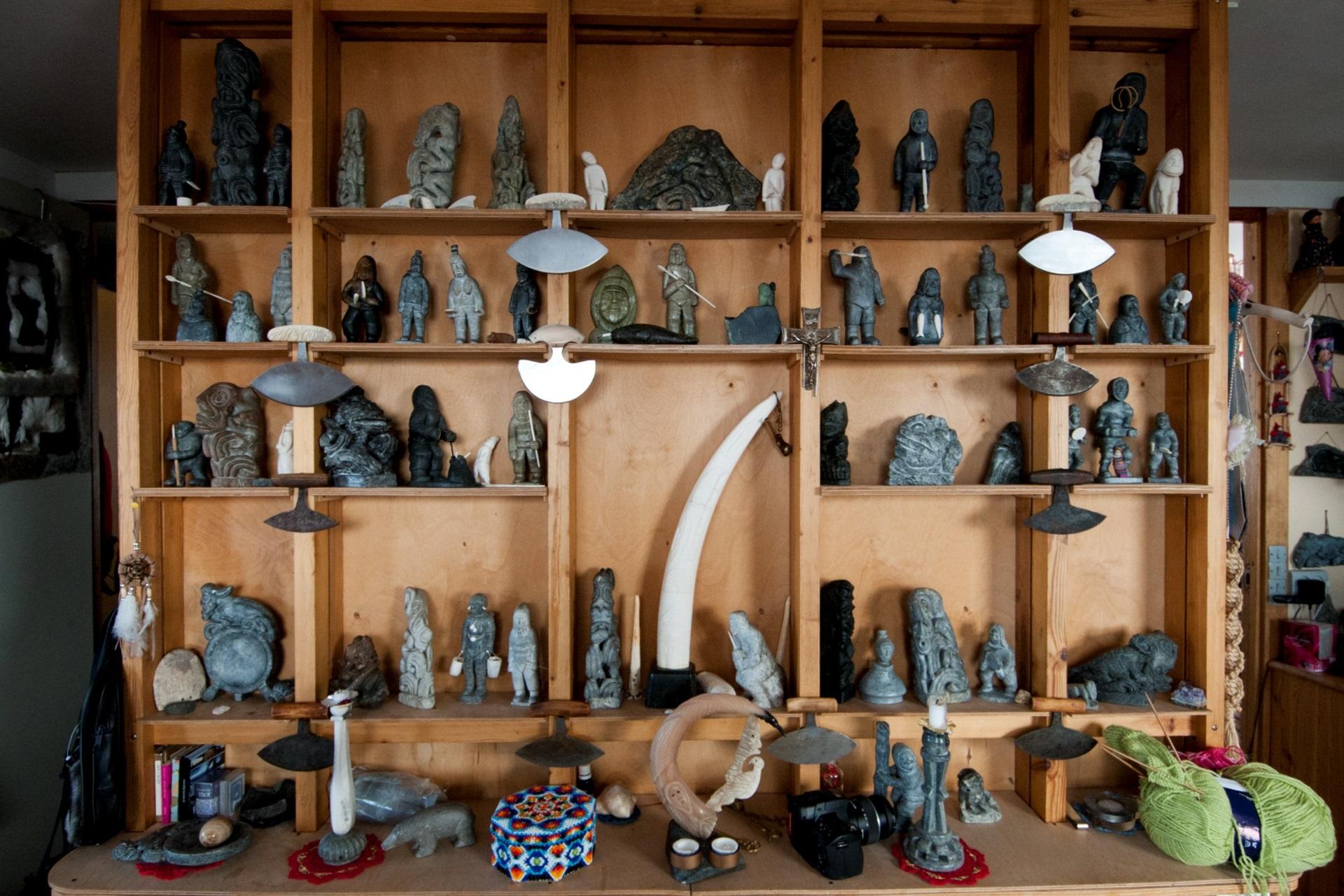Geotourism is tourism focused specifically on geology.
Greenland. The word invokes images of natural beauty, remote mountainous landscapes, Arctic wildlife. These are some of the reasons that tourists have long been drawn to Greenland. But what many visitors to Greenland find surprising is how equally, if not more, stunning is the geology.
What many visitors to Greenland find surprising is how equally, if not more, stunning is the geology.
Continues further down the page...
This is no surprise to geologists, of course. Greenland’s geology is iconic. And though most of it is covered in an ice cap, that not-so-little strip of land between the ice and the sea is almost bare rock – a geologist’s dream. But even for those not naturally inclined to swoon over the cold, hard ground, Greenland often has that exact effect. Just take a look at the jagged Stauning Alps or the multi-coloured folded rocks of Elenore Bay in east Greenland, or the glacier-topped granite monoliths of Eternity Fjord in west Greenland or in South Greenland.
But now the remarkable geology of Greenland is becoming even more accessible to visitors, and in a way that gives them real experiences with Greenlanders – through geotourism. Geotourism is tourism specifically focused on geology. It’s an emerging market in Greenland, and one being driven by locals. Instead of gazing at the passing peaks from the deck of a cruise ship, visitors can now get up close and personal with people who know the rocks, and even collect and bring home their own little piece of Greenland to remember.
There are several operators in different parts of Greenland who will take small groups of tourists out on boat trips to visit some amazing geology.
Erik Palo Jacobsen, of Arctic Boat Charter, based in Nuuk, has been running gold panning trips in Nuuk fjord for the past couple of years. Although the majority of his business is local and not all tourism, that is changing rapidly. There is a growing market for geotourism from foreign tourists and a growing local competition to fill that demand. Tourist groups of up to twelve passengers can join day trips with Arctic Boat Charter and combine their gold panning with fishing for red fish in a beautiful part of the fjord.
“Instead of competing”, he says, “we’re trying to make the cake bigger. There are so many opportunities for geotourism here.”
In South Greenland, Jewel Stones of Greenland also offers customized geotours of up to two weeks. Jewel Stones tours focus on the unique minerals of the Ilimaussaq Intrusion, an area with dozens of minerals that are found only in Greenland, some of them fluorescent and many of them real treasures.
Destination South Greenland is also a great source of up-to-date information about local operators.

In some Greenlandic towns, including Nuuk and Sisimiut, there are workshops where locals create and sell their products. Many items (including jewellery) are made from fur and bone, but soapstone carvings are also quite common and occasionally other stones are used. Soapstone actually has a long cultural significance to Greenlanders, who have used it historically for many household items.
In Nuuk, guests can make an appointment to visit Palle Møller, a local jewellery maker who operates his workshop Kassoq. Palle makes jewellery to order and specifically works with Greenlandic gemstones and with gold from South Greenland, as well as specialist minerals for collectors.
Also in Nuuk, the Greenland Ruby showroom sells individual rubies of different qualities and sizes extracted from the mine located ~160km south of the city. They also sell a wide range of jewellery enhanced with rubies.
Elsewhere in Greenland, the PANIKPANIK jewellery range is very popular and widely available for purchase. All pieces are designed and made by Greenlandic artists using locally sourced stones and precious metals.
One of the drivers of some of the new geotourism activity is a special small-scale mining licence designed for locals. Introduced in 2010, small scale – or artisanal – mining licences are designed to generate an income for local operators. The licence is for only a small area and for a small business. It is suitable for supporting local industry and is open only to people who have been resident in Greenland for five years or more. Since the licences were introduced, Greenlanders have been quick to realize the potential not just for mining and selling stones, like rubies, or soapstone, or specialist Greenlandic minerals for collectors, but also for geotourism. Small scale licence-holders can bring groups of tourists to visit their licence area to collect stones themselves or buy them from the licence-holder. Tourists can only bring minerals or stones out of Greenland if they are bought from a local citizen and if they can show a receipt of purchase.
More and more geotourism opportunities are popping up in Greenland. Tourists now have the chance not just to be wowed by Greenland’s staggering geological landscapes, but to really learn from the locals who know those landscapes – how they formed, where the real treasures are – and even to take a little piece of those treasures home with them.
There have been two television series whose stories centre around the geology of Greenland.
Frozen Gold (2021), an original series by The Weather Channel, follows 6 everyday Americans on their quest to discover wealth in areas of Greenland recently freed of ice thanks to climate change.
Ice Cold Gold (2013-2015) follows a team of miners from the US – some of the first to prospect for gold and precious stones in remote parts of Greenland.